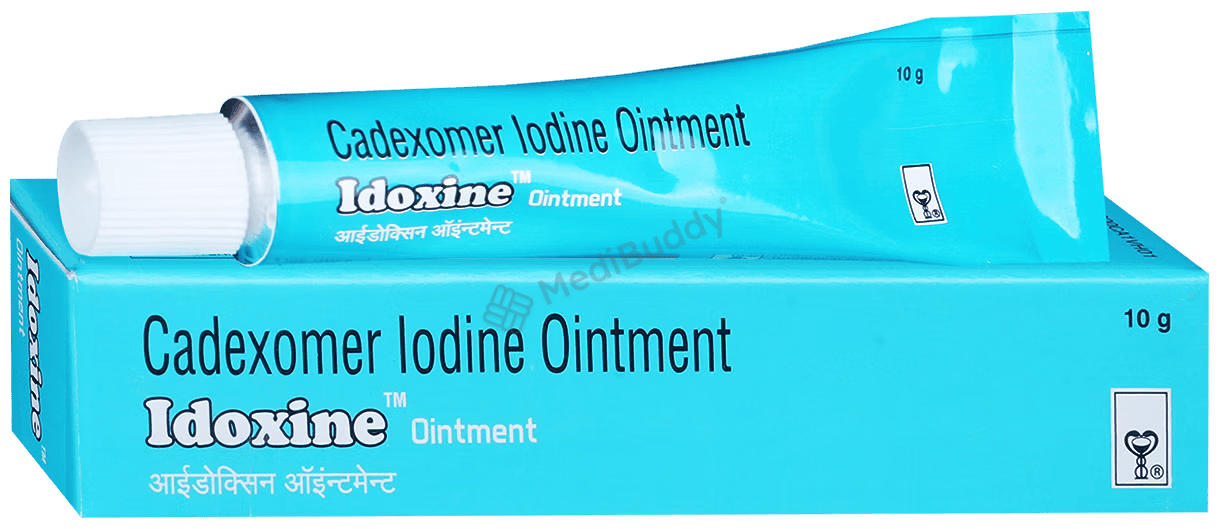Idoxine Ointment
By Idoxine
10gm Ointment in a Tube

Composition
Cadexomer Iodine(500mg)

Manufacturer - Franco-Indian Pharmaceuticals Pvt Ltd
20, Dr. E. Moses Road, Mahalaxmi, Mumbai - 400 011

Expires on or after
August, 2026

liver
While using Idoxine Ointment, it is important to exercise caution regarding its impact on the liver. As per the available information, there have been no interactions or effects established specifically related to the liver. Nonetheless, it is advisable to be vigilant and monitor any unusual symptoms or reactions that may affect the liver while using this ointment. If there are any concerns or uncertainties about the potential effects of Idoxine Ointment on the liver, consulting with a healthcare professional is recommended for further guidance and clarification.

kidney
No interaction or established concerns related to kidney issues have been found regarding the use of Idoxine Ointment.

alcohol
When using Idoxine Ointment, no interactions or effects with alcohol have been reported. It is important to consider the caution regarding pregnancy when using this ointment.

driving
No interaction found with driving, it's safe to drive while using Idoxine Ointment.

pregnancy
Idoxine Ointment is not safe to use during pregnancy due to the risk it poses to the baby's development. However, in rare life-threatening situations, a doctor may prescribe it if benefits outweigh risks. Always consult your doctor before use.

breastfeeding
Idoxine Ointment should not be used while breastfeeding as it may harm the baby. Research indicates potential toxicity risk.
| Habit Forming | No |
| Chemical Class | Iodine derivative |
| Therapeutic Class | DERMA |
| Action Class | - |
₹192.3
Inclusive of all taxes
Content verified by

Dr. Gowri Kulkarni
MBBS - General Medicine, DNB - Psychiatry, MRCGP [INT] Family Medicine, BSIC (BACP)
Last update on 11-Feb-2025





